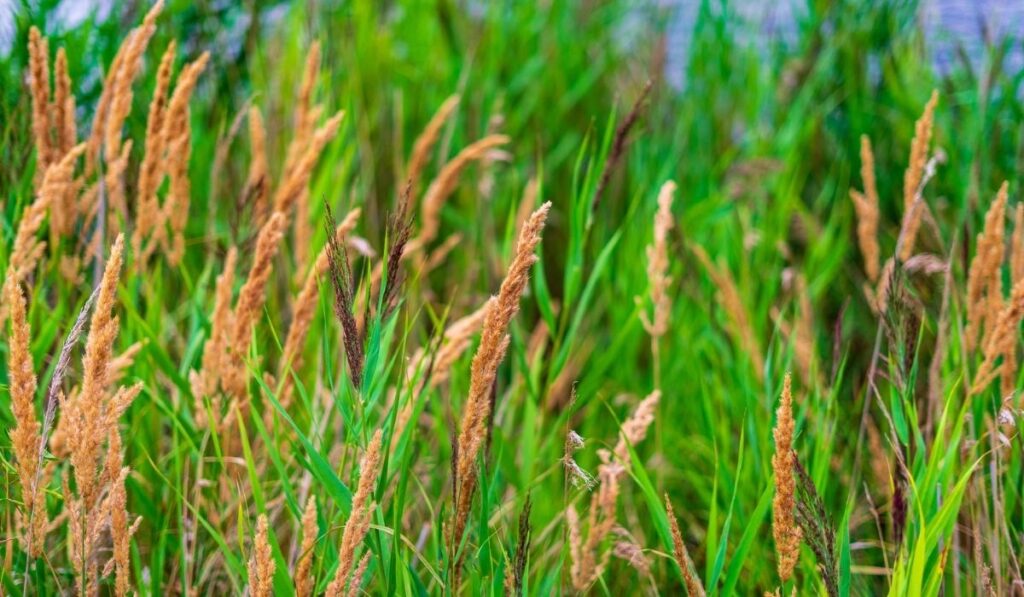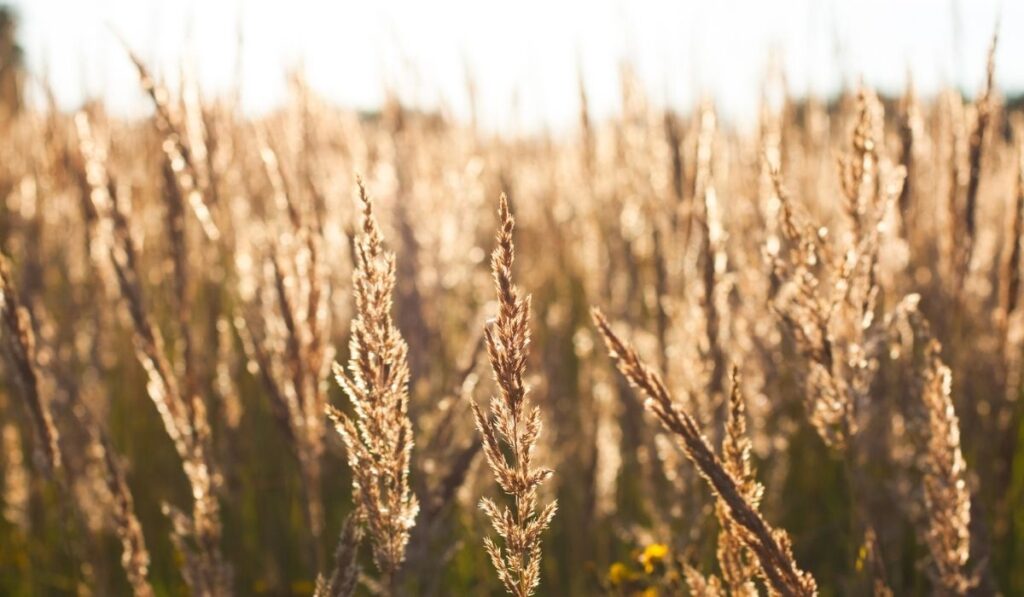Do you want to beautify your garden with fescue grass but aren’t sure when’s the best time to plant? If so, then this is the right place for you.
The optimal period to sow tall fescue seed is late summer to early fall when the ground retains some summer warmth. Tall fescue requires cool nights, temperate days, and warm soil for rapid, thorough germination and robust growth. Not to mention routine watering.
Let’s take a closer look at the best times to plant fescue grass, how exactly to go about it, and how to maintain your plants over time.
When Should You Plant Fescue Grass?

The fall season is the ideal planting season for this grass. You can benefit from the regularly decreasing temperature if you plant fescue grass at the start of fall. This grass grows well in lower temperatures.
By planting the tall fescue grass (on Amazon) in the fall, you’ll have a head start for gardening in spring since you won’t need to reseed your lawn. Additionally, fescue grass can be planted at the start of the spring season.
The perfect time to plant fescue grass in spring is when the ground has recovered from frost, and you can till and cultivate the soil properly.
How Do You Plant Fescue Grass?
Fescue is a hardy grass that grows in chilly conditions and becomes brown in the summer. After clearing an area of vegetation or cutting existing grass in the spring or fall, new fescue seeds can be planted. By tilling and enriching bare soil, you can plant grass seeds.
Existing fescue lawns may be reseeded as well. Renew their growth by aerating the soil and incorporating new seeds.
Find the Best Spot
It’s important to locate an area that is clear of weeds and has the proper pH. Fescue grass seeds perform well in soils with a slight acidity. Test the pH of your soil beforehand to avoid spending time on plants that will not thrive. Use a test kit like this one from Garden Tutor (on Amazon).
If your soil is particularly acidic, you should apply garden lime to it. If the soil is alkaline, apply compost or a soil conditioner. Eliminate all weeds two weeks before planting.
Prepare the Soil
Once an excellent spot has been identified, the soil must be prepared for planting. Remove the uppermost five to six inches of the ground. The optimal pH range for fescue is between 6 and 7.
Move back and forth with a garden tiller or tractor until the earth is loose enough. Remove all sticks, stones, and other debris from the area and break up the large clumps of soil.
However, avoid planting in excellent soil. Small clumps are acceptable. All depressed areas must be leveled to prevent additional water from gathering.
Fertilizer
It’s a good idea to have your county’s extension service check the pH of your soil before making a significant monetary investment in a lawn. Fescue thrives in soils with a pH of 6.0 to 6.5; your soil test results will tell you how much lime to apply if the pH is too low.
Many soils in the South are acidic and require lime. Purchase pelletized lime whenever feasible because it is considerably easier to distribute. Spread a complete lawn fertilizer with slow-release nitrogen after applying lime.
It’s best to start with a 3-1-2 ratio fertilizer, such as 12-4-8. For every 2,000 square feet of space, use 2.5 pounds of pure nitrogen.
Plant Your Seeds
You’ll need approximately five pounds (two kilograms) of fescue seed per one thousand square feet (93 square meters). Use sowing equipment or distribute the seeds evenly by hand. Don’t be scared to scatter a great deal of seed around the area.
It will ensure that the grass seems dense once the fescue has matured.
Maintaining Fescue Grass
Fescue grass is a cool-season grass with enhanced resistance to heat. The optimum times to plant it are in the fall and spring, during its peak growth periods. Due to its tendency to form clumps, this grass can benefit from frequent overseeding to maintain density and avoid a lumpy appearance.
Here are some factors to keep in mind for maintaining fescue grass:
Light
Tall fescue grass may thrive in either full sun or partial shade. These grasses can tolerate shade and grow in climates where warm-season grasses can’t survive the summer and cool-season grasses can’t survive the winter.
Fertilizing
Frequently, lawns lack the essential nutrients for growth and health. Fertilizer replaces nutrient deficiencies in lawns. Based on your soil analysis results, fertilize twice or three times in a year, starting from autumn and continuing until early spring.
Watering
Only a small quantity of water is needed by fescue to grow and remain green throughout the year. You will profit from an infrequent deep watering in case weekly rainfall is less than 1 inch.
Mowing
A minimum of weekly mowing should be performed throughout the year, except when fresh grass is present. A newly seeded Fescue lawn shouldn’t be mowed for at least three weeks to prevent harming the grass with heavy equipment.
One trim per week will keep it looking its best and prevent problems associated with excessive trimming.
Irrigation

Fresh sod requires 1 to 1.5 inches of water every week in summer heat. Establishing and rooting the sod in the first six weeks requires the right amount of irrigation.
Footprinting is an indicator that a lawn needs watering. Low-moisture fescues don’t recover rapidly when stepped on. If footsteps remain on the grass or vanish slowly, it’s likely time to water.
You can buy an irrigation kit such as the Rain Bird Irrigation Garden Watering Kit (on Amazon) to take care of this matter.
Lawns composed of drought-stressed fescue typically have a bluish-green color, and plants may have rolled leaves. Watering between 5 a.m. and 11 a.m. reduces the amount of water lost to evaporation and the time water droplets remain on leaves.
